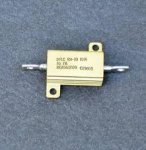Recently i needed an inverter for use with a USB to TTL adapter (CP2102) and as most common inverter chips are hex inverters with a large than needed package i decided to use a smaller dual opamp LM358 (8 pin chip) its a common opamp that will work from a single supply.
I tried it with the CP2102 USB adaptors and the PL2303 adapters and both work without fail even sending data at 32mhz.
The circuit makes a smaller foot print on the pcb and easy to setup.

View attachment LM358 USB Inverter.pdf
I tried it with the CP2102 USB adaptors and the PL2303 adapters and both work without fail even sending data at 32mhz.
The circuit makes a smaller foot print on the pcb and easy to setup.

View attachment LM358 USB Inverter.pdf


